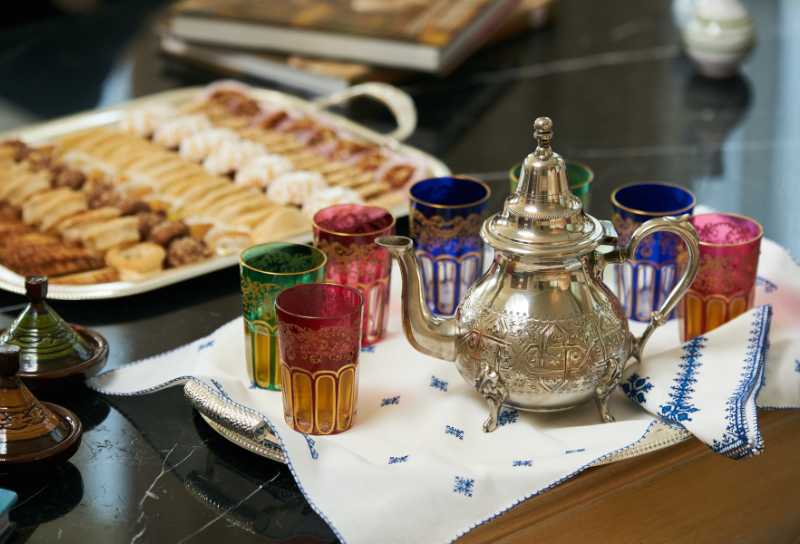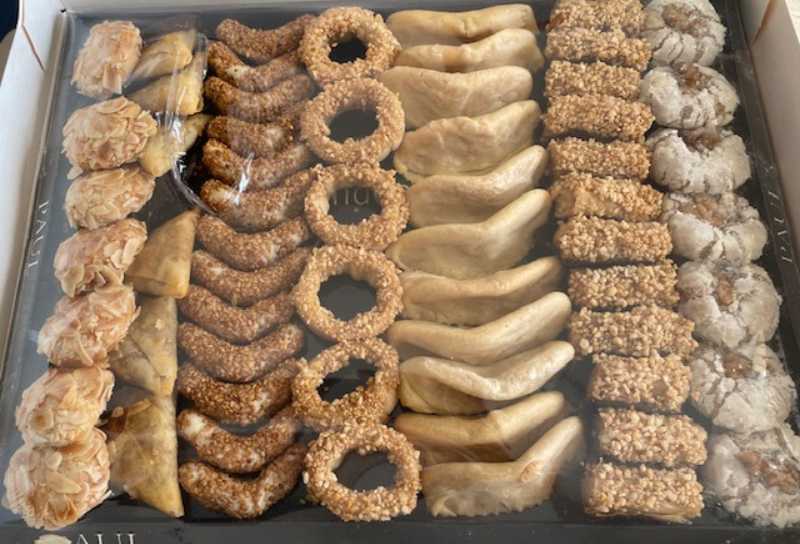Moroccan tea culture is a deeply rooted and cherished element of daily life in Morocco.
Central to this vibrant tradition is the age-old ritual of preparing and serving mint tea.
Known as “Atay b’nna’na” in Moroccan, mint tea is more than just a drink; it embodies hospitality, friendship, and tradition.
This article delves into the captivating world of Moroccan mint tea, exploring its preparation, significance, and its role in Moroccan social life.
The Art of Preparing Mint Tea
Making Moroccan mint tea is a delicate process that combines Chinese green tea, fresh mint leaves, and a generous amount of sugar. The preparation involves a series of specific steps that blend art with culinary skill.
- Boiling the Water: The process starts with boiling water, which is poured over the tea leaves in a teapot to rinse them. This initial infusion is discarded, allowing the leaves to open up and removing any impurities.
- Second Infusion: After rinsing, the tea leaves are steeped again in freshly boiled water. This marks the beginning of the actual tea-making process. The quality of the green tea used is crucial for the final taste.
- Adding Mint and Sugar: Fresh mint leaves and generous amounts of sugar are added. Moroccan mint tea is known for its sweetness, often surpassing what is typical in Western teas.
- Steeping: The mixture of tea, mint, and sugar is allowed to steep for several minutes, allowing the flavors to combine and create the signature taste of Moroccan mint tea.
- Pouring: Traditionally, the tea is poured from about a foot above the glass, enhancing the flavor and creating a frothy head.
- Serving: The tea is served in small, decorative glasses. It’s customary for the server to hold the glass at the bottom, ensuring that the guest has the first sip, while the last sip, which is stronger and sweeter, is reserved for the server.
Moroccan Tea Pots

At the core of the Moroccan mint tea ritual is the iconic Moroccan teapot, often referred to as “the Moroccan teapot” or “teapot with a long spout.”
These teapots, typically crafted from brass, copper, or silver, are essential to both the preparation and presentation of this beloved beverage.
Renowned for their exquisite designs and craftsmanship, Moroccan teapots come in various shapes and sizes, usually featuring a bulbous base, a long, curved spout, and a hinged lid.
Many are adorned with intricate engravings and decorative patterns, making them functional items as well as beautiful works of art.
Moroccan Tea and Cookies

In Moroccan culture, tea is typically accompanied by a delightful array of cookies and pastries. These sweet treats perfectly complement the sweetness of the mint tea, enhancing the overall tea experience.
Popular Moroccan cookies to enjoy with tea include “Ghriba” (crumbly and nutty cookies), “Kaab el Ghazal” (crescent-shaped almond-filled cookies), and “Fekkas” (crispy and spiced biscuits).
The combination of mint tea and cookies creates a delightful mix of flavors and textures, making tea time a treasured tradition in Morocco.
The Importance of Moroccan Mint Tea
Moroccan mint tea is more than just a drink; it is a vital part of Moroccan hospitality and culture with several significant aspects:
- Symbol of Hospitality: Offering mint tea to guests is a warm gesture of welcome, whether in a Moroccan home, shop, or café.
- Fostering Social Connections: Moroccan mint tea acts as a social lubricant, bringing people together for casual gatherings, family celebrations, or business meetings, encouraging connection and conversation.
- National Identity: Mint tea is intricately tied to Morocco’s national identity, reflecting the blend of various cultural influences—Arab, Berber, and French.
- Surprises in the Souks: For those exploring the lively and vibrant Moroccan souks, merchants often serve tea with a welcoming smile, enhancing the shopping experience.
Related Post: Moroccan Cookies and Sweets
Conclusion
The ritual of preparing and serving Moroccan mint tea transcends being merely a beverage; it encapsulates the warmth, hospitality, and traditions of Moroccan culture.
Every step in the tea-making process is steeped in meaning and history, creating a drink that unites people, whether for celebration, conversation, or comfort.
So, when you find yourself in Morocco, take the time to enjoy a cup of this iconic tea and truly experience the heart and soul of Moroccan culture.



